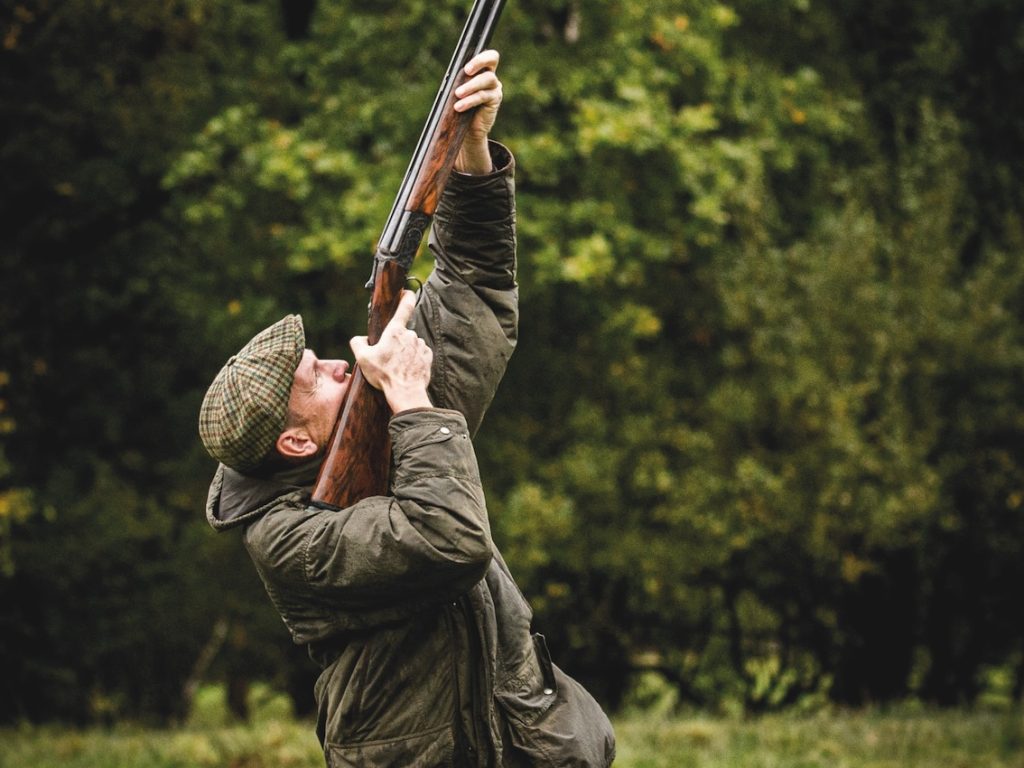Win CENS ProFlex DX5 earplugs worth £1,149 – enter here
Can you imagine the countryside without the Land Rover?
Can you imagine a countryside without the Land Rover? As a much-loved rural icon turns 60, Alastair Balmain reflects on what this British success story means to shooters
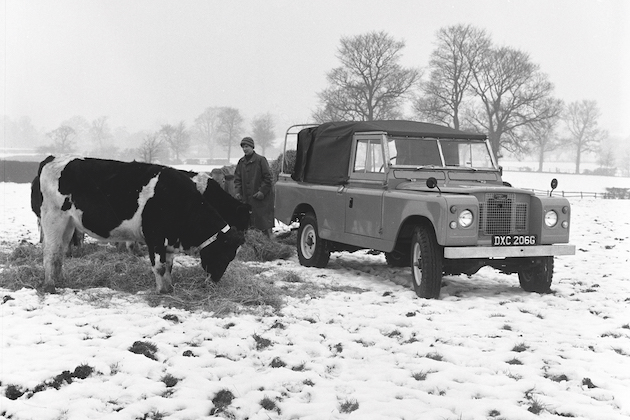 Series 2
Series 2
This article first appeared in Shooting Times to celebrate the 60th anniversary of Land Rover in May 2008.
Accompanied by the wheeze, rasp and pop of its distinctive exhaust note, my father chugged to a stop in our newly acquired and rather tired Land Rover, a time-served 1967 Series IIA short wheelbase model. (Read why Land Rovers are hard to beat.)
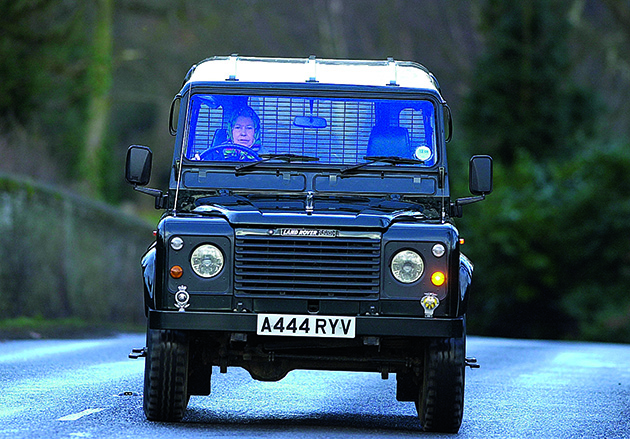
The late HM Queen Elizabeth II driving herself in a Land Rover Defender 110 to the stables on the Sandringham Estate in Norfolk.
Dual purpose Land Rover
Painted externally in traditional British agriculture green and inexplicably hand-painted a migraine-inducing safety yellow on the inside, it was to serve a dual purpose, first as a restoration job for two mechanically inclined boys, but primarily, like many of its kind, it was to be put to work on the local syndicate lugging grain to hoppers, ferrying Guns, dogs, beaters and shot game.
In other words, the type of activity the vehicle’s original designer Maurice Wilks envisaged in 1947, when he came up with the idea for a product the Rover car company could build as an export model for the agricultural market to bring much-needed cash into the company’s post-War coffers.
To me and my brother, with no concern for its historical context, but fresh driving licences and a passion for shooting, doing up an old Land Rover had considerable merit. We set to with spanners and plenty of paternal advice, stripped the 4×4 piece by piece to a naked chassis, changed what needed changing, ground what needed grinding (engine valves and lots of rust) and sprayed Waxoyl liberally. (Read our latest review of the Land Rover.)
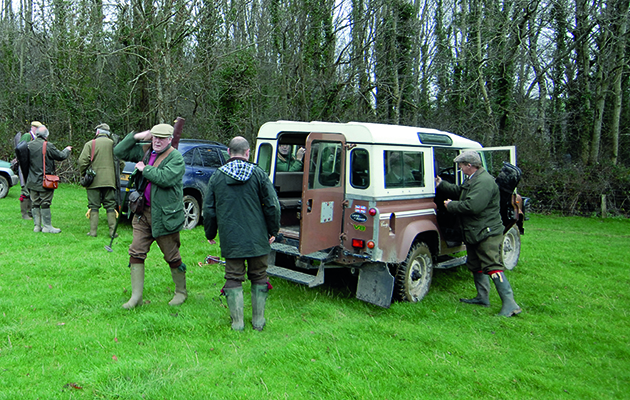
The shoot vehicle of choice, the fieldsports community has a soft spot for Land Rovers
Eventually, with engine rebuilt and wheels refitted, the magical day came to turn the key. Standing as simply a bare shell with running gear, we fired it up anticipating a mechanical whirr, barely hoping for anything approaching authentic internal combustion. To our delight and surprise, the decades old motor roared to life instantly. I was hooked.
Affection for old Land Rovers
The story of my affection for old Land Rovers is not unusual and will strike a chord with many readers. Years of faithful service followed for that first vehicle, until there was simply too much wheat growing in the back and too much rust eating the chassis at which point it was offloaded to another committed enthusiast. Its replacement was obvious. A marginally more youthful Series III model, with a genuine 38,000 miles on the clock. No other 4×4 could give the same vintage driving experience, style and mechanical honesty.
In 60 years of production, the Land Rover has attained a deservedly iconic status. It is frequently regarded as the default choice in the real countryside, not simply for its ability off-road, but also because of the associations that go with it. There is something about our British 4×4 that makes it one of the few cars, including the Mini and the Beetle, for which people find they can develop a genuine affection. Riding in an old Land Rover has the power to make you smile. Unlike the Mini and the Beetle, however, the version you can buy today is not a pastiche of the original, it is the latest stage in a 65-year evolution.
When Wilks first put pen to paper, he could surely not have imagined that in 2008 his car, still very much identifiable, would be using a development of the same box-section chassis. When debuted 60 years ago this week at the Amsterdam Motor Show, the Land Rover was heralded by customers and motoring journalists alike. By the end of the year, the company’s board was told its success meant output was likely to exceed that of Rover’s more traditional cars and manufacturing was swiftly increased from 100 units per week to 500. The sales success of an off-road vehicle that, as early literature stated, did everything the horse can do, plus a lot more and at three times the speed was assured.
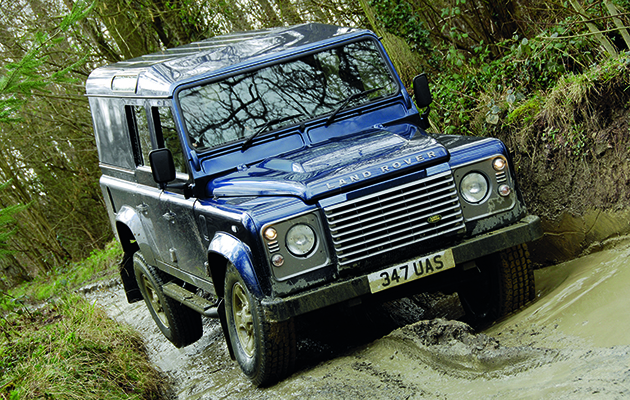
The 2007 Defender traces its roots all the way back to the first model
According to Roger Crathorne, Land Rover’s technical communications manager, the way shooters treat their vehicles makes them among the most demanding of users, meaning even the hardiest utilitarian workhorse is going to be punished in a shoot setting. He should know. He started with the company as an engineer and after 45 years is Land Rover’s longest-serving employee. He’s seen everything that could be done to the vehicles. Gamekeepers especially are tough on them. They tend to hammer them until they break, he says, with the resigned air of a man used to seeing something he’s nurtured being woefully neglected.
Top marks to Atholl Estates in Perthshire, however, one estate which, like Eastnor Castle in Herefordshire, the motor manufacturer has a long association with both for testing purposes and, more recently, offering customers and enthusiasts off-road driving experiences.
“They really know how to look after their vehicles at Atholl Estates,” comments Roger. “They didn’t swap over to the new coil-sprung models until a good nine years after we’d first introduced them for the simple reason that their old leaf-sprung vehicles kept on giving good service and they didn’t see the need to change.”
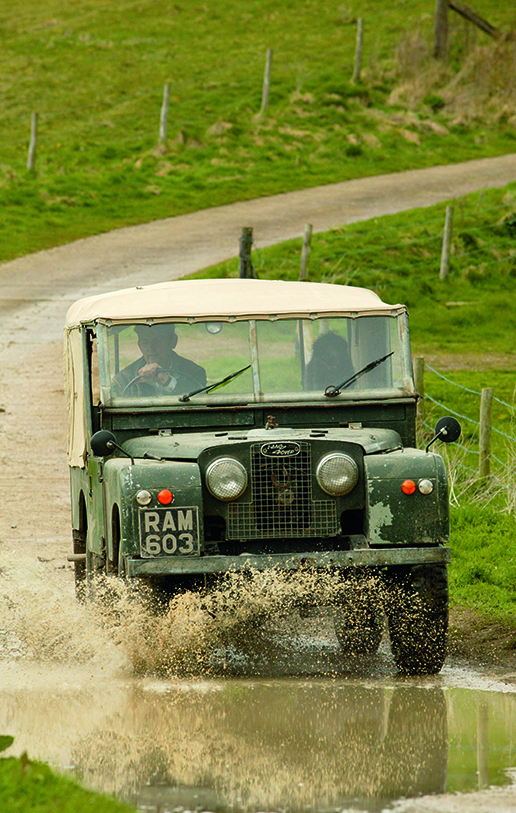
In 1948 the Land Rover was a new product for the post-War world, the Series I goes on sale
Land Rover in its natural habitat
It is in such places as Blair Atholl that the Land Rover is in its natural habitat demanding and frequently challenging rural environments. Indeed, its reckoned that the first vehicle seen by one third of the worlds population was a Land Rover. Whether that’s true or not, more tenable is the fact that somewhere between 60 and 80 per cent of all Land Rovers produced are still on the road in one form or another, thanks to the huge industry that exists to keep them going.
For a product integrally associated with countryside management and improvement, the stigma in recent years attached to off-road vehicles thanks to the green lobby, comes as a particularly painful blow.
“Given the longevity of our products, you could argue these are among the most sustainable of all vehicles,” explains Roger. “The militant green lobby, it seems, can only think in terms of CO² and not in terms of practical application. For example, how can a Toyota Prius help with tree clearance or tow a gang mower?”
Rigorous testing
The Land Rover’s success lies in its versatility, strength and its off-road ability, but shooters now have a huge variety of 4×4 vehicles to choose from, so the question is, can the latest incarnation of the Defender model still cut it?
The Solihull factory is home to the original testing facilities where the vehicle has undergone trials throughout its many forms. To say the course is rigorous would be an understatement. With deeply rutted and heavily flooded tracks, sharp angles of approach and departure to impossibly steep artificial inclines and twists and turns to test the axle articulation of the best, the 15-acre course is purpose-built not to flatter the vehicle’s abilities, but to test them meaningfully.
It also happens to be a wildlife haven, one of Roger’s pet projects where he has supervised the planting and management right in the heart of a major industrial site.
“One of my colleagues was training the RSPB to drive the other day and spotted one of our kingfishers,” explains Roger. “They couldn’t believe we have kingfishers in here, but we do and that’s not the least of our wildlife.” On cue, as I pulled off to attempt the circuit, a mallard flew directly out from in front of the wheels.
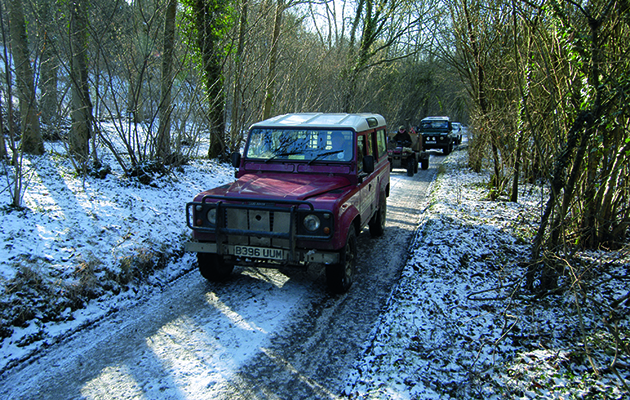
In 1983 round windscreens and County station wagon models added more refinement
A modern interior
The first thing drivers used to old Series Land Rovers will notice is how frightfully modern the latest interior is. While some may lament the loss of the three-seat bench across the front, and others will be left staring in confusion at the floor for the traditional red and yellow transmission levers, undeniably, the new model has what you could call a degree of ergonomic design. This is a Land Rover, however, and all things are relative. The interior is still a commendably spartan and rugged place to sit in a decidedly upright fashion, its just that now, rather than opening the ventilation flaps in the bulkhead, you can turn on an effective air-conditioning system on the new centre console.
More important than fripperies such as cup-holders (there are two), is the new diesel power plant and transmission that drive the latest model. Though Land Rover is in the process of being bought by India’s Tata Motors for $2.3billion, one of the advantages of Ford’s recent ownership of the company is the opportunity to raid the parts bin. The tough 2.4L Puma engine and six-speed gearbox more commonly found on Transit vans have, in Roger’s words, been Land Roverised to adapt them to even more demanding uses. Quite how that’s possible is a mystery, given White Van Man’s fearsome reputation.
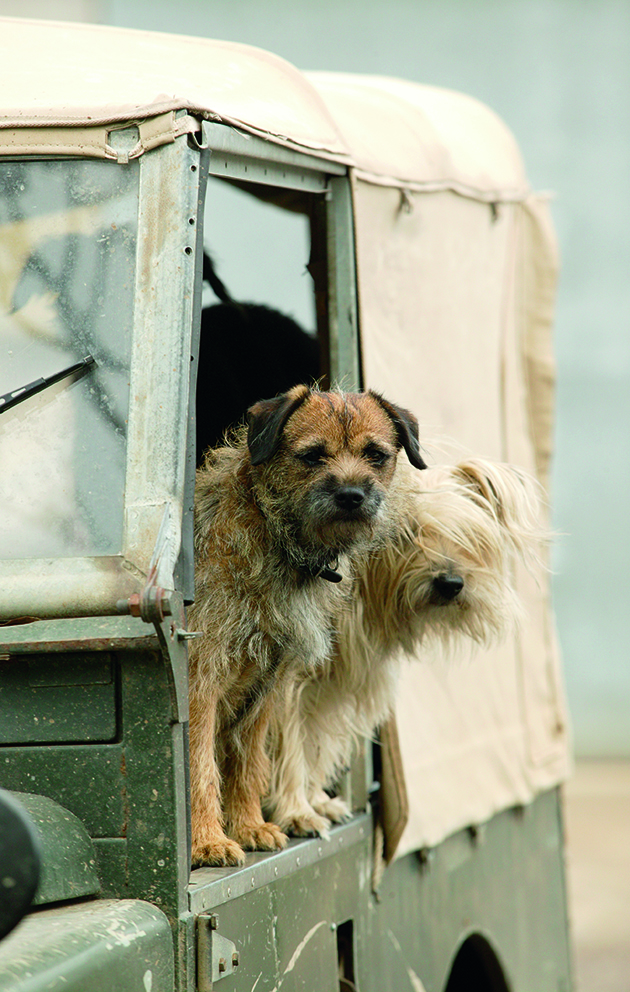
Plenty of room for dogs, Guns, beaters, pickers-up, or bags of feed, Land Rovers remain one of the most practical of 4x4s
Formidable handling
The way the new Defender handled the course was formidable. The sheer power of the engine braking, coupled with particularly intelligent electronic engine management systems, mean that in this vehicle the typical shoot will find a largely unstoppable lugger. Dropping down a wet 36 degree slope in low range, there was no concern over trusting the astonishing anti-stall system to take over to ensure a safe descent. Climbing was an equally impressive affair. No 4×4 is flawless and, with Roger at the wheel, attempting a series of steep, shiny wet and muddy concrete steps saw us drop back down once or twice in order to take a different approach.
Eventually we cruised up in second, however, with the traction control audibly delivering power where it was needed most. On my go, I went straight up, though that has more to do with the steps drying out than driving ability.
“It’s important to remember that we only test vehicles here in stock form as you would buy them in the showroom,” noted Roger when we reached the top.”Usually customers with particular needs fit their preferred tyres for serious off-road use. Regardless, the stock performance of the latest Defender would fail to impress only the most demanding of estate owners.”
Land Rover is rarely defeated
Impressing driver and passengers alike has been the Land Rovers stock-in-trade for many years. The similarities are striking between the latest and the earliest models. Things may have come on a bit, but a slope you thought you could never climb, a track you thought impassable or a bog you believed to be terminal, the Land Rover in whichever guise is only rarely defeated.
While the vehicle has now been around long enough to apply for a bus pass, it shows no signs of losing its place in the countryside’s heart. The latest model may retain some of its predecessors’ faults the seating can be a bit cramped and the driving experience is still not exactly sporting but that is missing the point. A Land Rover isn’t meant to be a shiny plaything of the aspirational, it’s a working tool. The rural love affair with the Landy looks set to continue and shooters will rightly cram Labradors, spaniels and Guns in theirs for many years to come.
Related Articles
Get the latest news delivered direct to your door
Subscribe to Shooting Times & Country
Discover the ultimate companion for field sports enthusiasts with Shooting Times & Country Magazine, the UK’s leading weekly publication that has been at the forefront of shooting culture since 1882. Subscribers gain access to expert tips, comprehensive gear reviews, seasonal advice and a vibrant community of like-minded shooters.
Save on shop price when you subscribe with weekly issues featuring in-depth articles on gundog training, exclusive member offers and access to the digital back issue library. A Shooting Times & Country subscription is more than a magazine, don’t just read about the countryside; immerse yourself in its most authoritative and engaging publication.







